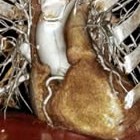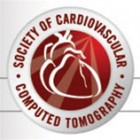 Consumer Reports regularly publishes health information to aid the consumer/patient in making decisions. And that’s a good thing. But also important is having the most current information, which their January 27, 2015 article, titled “The surprising dangers of CT scans and X-rays,” does not.
Consumer Reports regularly publishes health information to aid the consumer/patient in making decisions. And that’s a good thing. But also important is having the most current information, which their January 27, 2015 article, titled “The surprising dangers of CT scans and X-rays,” does not.
All of the cautions about imaging tests that are listed in the Consumer Reports article are valid: ask why the test is necessary; check the credentials of the imaging specialist; ask for the lowest effective dose; avoid unnecessary repeat scans.
But one important piece of data is almost a decade old and, as a result, is potentially misleading. I’m talking about the radiation dose from a Cardiac CT scan. The article states that a Cardiac CT Angiogram (CTA) exposes the patient to 12 mSv of ionizing radiation, or 120 times that of a chest X-ray. This was true years ago, when CTA was first being used to diagnose coronary artery disease. But it is not true today.
Current low-dose protocols have radically reduced the radiation exposure of CTA scans. The four leading imaging manufacturers, Philips, Siemens, GE, and Toshiba, all have redesigned their CT scanners to allow for far lower doses, using gated technology and other solutions, without compromising image quality. In fact many of the leading centers report radiation doses of 1-2 mSv with no loss in image quality. That’s a reduction of 90%!
So what? Well, the usefulness of CTA in diagnosing coronary artery disease (CAD) is very high, especially in its negative predictability, which exceeds 99%. In other words, if a CTA shows that you don’t have blocked arteries, then you can be very sure that you don’t. If the CT shows blockages, then further testing, to see if those blockages are in fact significant, is advised. But, unlike a standard coronary catheterization, which is the other “definitive” test for blockages, a CTA is non-invasive, takes only minutes, is far less expensive, and has almost no complications. CTA is used increasingly in Emergency Departments to determine whether patients presenting with chest pain are suffering from CAD or some other issue. In short, CTA has the potential to eliminate unnecessary cardiac caths, lower costs and shorten ER stays.
I covered many of these points back in 2008, when another publication, the New York Times, published an anti-CTA article, calling it a “dubious tool.” It wasn’t true then; it’s far less true today.
An interesting aspect of the Consumer Reports article is that other much more widely-used tests are not discussed at all; one example is the nuclear stress test, the most often-utilized cardiac test, which has a radiation dose of 12-24 mSv! I’d also add that this decade-old 12 mSv radiation dose for a CTA is used in a number of journal articles and studies, not just Consumer Reports, so let me attempt to set the record straight.
So, Angioplasty.Org did a quick survey of some of the leading specialists in the field of cardiac imaging, and I present below their only slightly edited comments.

Dr. Michael Poon
Dr. Michael Poon, Director of Advanced Cardiovascular Imaging at Stony Brook University Hospital writes: “The article is intended to make CT and X-rays look bad and not being fair about other equally damaging and more frequently used and less accurate and informative diagnostic tests, e.g. nuclear stress. I published an article two years ago that we routinely performed CTA in the ED with less than 6 mSv…. The [figure of] 12 mSv for CTA is at least 5 years old and based on outdated technology and technique of scanning. We are routinely performing CTA with close to 1 to 2 mSv right now.”

Dr. Armin Zadeh
Dr. Armin Zadeh, Associate Director of Cardiac CT at Johns Hopkins elaborated on some of the same issues: “The PROTECTION I study (Hausleiter J, JAMA 2009) monitored the dose in clinical practice at 50 sites worldwide and they came up with the 12 mSv. However, these data are almost certainly outdated because they were obtained before the widespread use of prospective triggering and iterative reconstruction. Doses are in the 1-3 mSv range in major CT labs.
“Another important point: SPECT doses are 11 mSv with sestamibi and 24 mSv with thallium! In fact, nuclear stress testing accounts for the single greatest contributor of radiation from medical imaging (Fazel et al, NEJM 2009) and that should be the bigger story as we are doing 10 million nuclear stress tests in the US EVERY YEAR!!
“I am a big opponent of unnecessary radiation with medical imaging and it is good that awareness has increased. It is true that we do way too many CT scans with potential harm to patients. In this regard, the article is helpful. We need to carefully weigh the benefits and risks of any test. Cardiac CT though should not be generalized to be an offender as it can actually lead to substantial reduction in radiation exposure from imaging if used appropriately. Conversely, it can be harmful if not used appropriately and/or if old technology is used.”

Prof Stephan Achenbach
And Professor Stephan Achenbach, Chairman, Department of Cardiology, University of Erlangen, Germany stated: “Indeed, the dose cited here for coronary CT angiography is inappropriately high. It is probably taken from a JAMA publication by Hausleiter which looked at doses at various sites that were obtained in the year 2007. Meanwhile. substantial improvements in hard and software have occurred and average doses are substantially lower. For example, Chinnaiyan et al reported a dose of less than 7 mSv in an statewide observation of approximately 11,000 patients in Michigan in the year 2013. However, experienced sites routinely scan with doses between 1 and 3 mSv and several publications show that doses of less than 1 mSv are well possible.
 Finally, the Society of Cardiovascular Computed Tomography (SCCT), the professional organization for the field of CTA responded: “The SCCT notes that coronary CTA is not meant to be used as a screening test but should be utilized for symptomatic patients with appropriate clinical indications according to published ACC/AHA/SCCT clinical guidelines. With appropriate test selection and optimization of scan parameters for the individual patient, the benefit of this important diagnostic tool should necessarily outweigh any potential risk.
Finally, the Society of Cardiovascular Computed Tomography (SCCT), the professional organization for the field of CTA responded: “The SCCT notes that coronary CTA is not meant to be used as a screening test but should be utilized for symptomatic patients with appropriate clinical indications according to published ACC/AHA/SCCT clinical guidelines. With appropriate test selection and optimization of scan parameters for the individual patient, the benefit of this important diagnostic tool should necessarily outweigh any potential risk.
SCCT also points to more contemporary references for dose. The Michigan ACIC registry published a study in Circulation: Cardiovascular Imaging in 2013, based on 12,000 patients, showing that the median dose from CTA was 4.9 mSv in 15 hospitals and radiology outpatient laboratories in the state of Michigan. These data are from a very large group of patients and represent a real-life clinical sample.
SCCT remains committed to promote responsible cardiac CT imaging. Efforts to date have included the publication of appropriate use criteria, guidelines for the performance of cardiac CT/coronary CTA, and guidelines for the implementation of dose minimization techniques.”
* * * *
CTA offers many advantages for patients, especially when used with low-dose protocols. Unfortunately CTA has not been universally accepted as a definitive “rule-out” test and it currently is not completely reimbursed by medical insurance in the U.S. This is frustrating, especially since the technology is rapidly evolving: several companies (Philips, HeartFlow, etc.) are currently testing an FFR-CT system which would show not only the coronary blockages, but would measure the blood flow through them to determine whether they were physiologically “significant”: all done non-invasively and at relatively low-cost.
Are these low-dose figures universal? No. Again, most major centers know how to do this, but Dr. Poon suggests that patients need to be proactive about making sure they’re being scanned with a low-dose protocol. He told Angioplasty.Org, “Patients may read about this, may see the headlines, and then they need to go back and ask the imaging center, ‘What method are you using to lower the dose?’ And if they don’t know what you’re talking about, I would say, ‘See you later!’




On Oct. 28th I had pain in my jawbone and it turned out to be a heart attack with 99% blockage. I had a stent put in. Then on Nov.25th more jaw pain and \next day Nov. 26 had a Chemical Stress Test and that night I had pain in my left jaw bone. I could hardly open my mouth to brush my teeth. I know with a chemical stress Test there can be Side Effects. But, for how long??? Each day my jawbone is better but feel the sensation that something isn’t perfect. My Dr. wants me to have a Cat Scan Angiogram. How much radiation is there actually in this test.? I’m really concerned about radiation as I have several Chest X rays, & MRI . Any information about radiation I would appreciate. .
Radiation from chest X-rays is pretty minimal. There is no ionizing radiation from MRIs; it’s a different imaging modality from X-ray or CT. As for getting a CT Angiogram, the radiation dose varies widely, depending on many factors. You should definitely request an imaging provider that adheres to the low-dose protocols that all major CT manufacturers have recommended.
We have a family member scheduled for a CTA. Should we ask the Imaging Center how old their machine is and how much radiation is used? Is the age of the machine what makes the difference, or is it something the Imaging Center can do to use less radiation? Thank You for sharing this article! The doctor wanted a nuclear stress test done, but based on what you’ve shared here and other things we’ve read, it seems the CTA uses much less radiation than a nuclear stress test and gives a more complete picture of what is going on with the heart.
Given the choice between Electron Beam Tomography (EBT) or a CT scan, which one is the superior scan?
Joe – It depends on what you’re looking for. EBT was used primarily for assessing a Calcium score. It’s used less these days because the newest Multidetector Cardiac CT systems can do that plus much more with similarly low radiation exposure and fast acquisition.
I guess I should have been more specific. I’m sorry about that. I would like to know, in your opinion, which of the two is best for an angiogram scan. I know the EBT machines can do a Virtual Angiogram Scan, but I don’t know how well a CT scan machine will do it (or IF they can do it?). What do you think is the best to do an angiogram scan?
Joe – The modern up-to-date Cardiac CT scanners can do pretty amazing visualizations – even estimating flow dynamics through narrowings. While still not as accurate as an actual angiogram, they have the big advantage of lower cost and they are non-invasive. And they have high sensitivity (98-99%); if the CT shows no coronary narrowings, there most likely aren’t any.